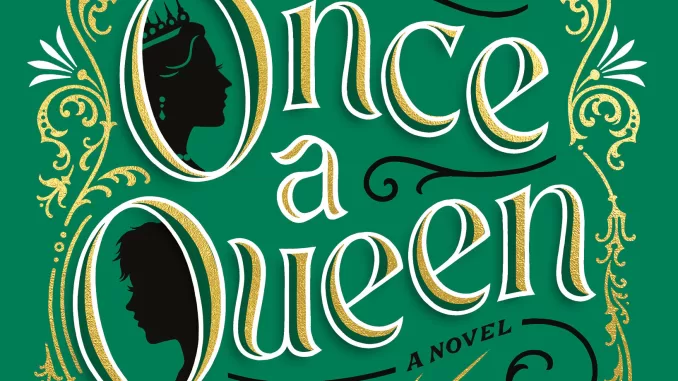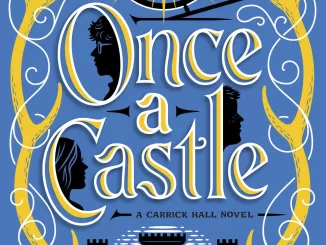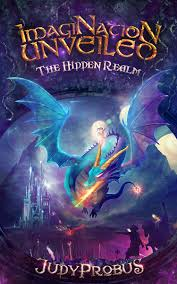
Hey, everybody! Welcome back to Tumnus’ Bookshelf, where we review any and all books written by, about, and inspired by CS Lewis, The Land of Narnia, and The Inklings. For today’s review, we will be looking at Sarah Arthur’s novel Once a Queen.
TITLE: Once A Queen
AUTHOR: Sarah Arthur
PUBLISHER : WaterBrook
ISBN-10 : 0593194454
ISBN-13 : 978-0593194454
Summary:
All her life, Eva Joyce wished that her favorite fantasy stories were real. The daughter of English professors, worlds of fantasy and adventure were nestled deep within her imagination, and as she grew up, she started to wonder if they really were just that: only stories. Then Eva and her mother Gwendolyn travel to England to visit the grandmother she never knew she had; Eva wasn’t sur e what to expect.
e what to expect.
Initially showered with gifts and affection, Eva discovers the mysteries and secrets of her families past and learns that such worlds may actually exist. Moreover, she discovers that world is deeply connected to a tragedy that befell her family and left it fractured. Joined by her new friend, Frankie Addison and a host of other colorful characters, Eva embarks on a journey of redemption, mystery, and fantastic adventure that dives deep into her family’s story.
Review:
It’s no secret that the subgenre of fantasy devoted to looking at what happens after “the end” has gained a lot of traction. From the moment we close that last book in a series we wonder what comes next. Moreover, what about the circumstances that led to that journey? From the cholera epidemic that led Mary to Misselthwaite Manor in The Secret Garden to the Air Raids on London in World War II that would guide Peter, Susan, Edmund, and Lucy to the Wardrobe into Narnia, to the mental torture Charles Wallace endured at the hands of the Man With Red Eyes in a Wrinkle in Time, these characters encountered great pain before the story that changed their lives forever, and as we grow older we wonder as a result if they could ever find peace and healing.
In her new novel, Once a Queen, Sarah Arthur seeks to unravel those questions. Having already written at least three devotional books on the works of JRR Tolkien and CS Lewis, as well as hosting a Madeleine L’Engle Writer’s Retreat, Sarah Arthur has more than established herself within the community of fans of those works. Thus, it comes as no surprise to find out she masterfully knows how to tell a story in those veins. Set in 1995, a time in which fantasy wasn’t as in vogue as it is now, for many parents reading the book, it will feel exactly like how they did when they first encountered their favorite worlds as they embark on an adventure that is equally familiar and new.
With her knowledge of the genre, she also knows how to play with the “Portal “method of travel between worlds by drawing inspiration from a longstanding fan theory in The Voyage of the Dawn Treader, namely that the frame for the picture of the ship was made from the same enchanted wood as the Wardrobe in The Lion, The Witch, and The Wardrobe. This makes her story feel as though it could be connected through the Wood between the Worlds in Narnia, making it a compelling edition to the “Portal fantasy genre”. Yet at the same time as mysterious events happen at night at the manor, her story takes on an almost eerie, Gothic tone akin to the classic Sherlock Holmes novel The Hound of the Bakservilles, right down to the family secrets.
Equally compelling is the excerpts from the in-universe fantasy novel AHW Clifton’s Ternival: Selected Tales. Not since William Goldman’s The Princess Bride introduced me to S. Morgnestern have I been more convinced that a fictious novel within a story actually existed. I actually found myself scouring all over Google, Amazon, Wikipedia, and Barnes and Noble.com just to double and triple check if this delightful book actually existed. It is a pretty much well-established fact among hard core fans of the fantasy genre that in the span of time between Frodo sailing away into the West and the door to Narnia closing forever to the day when Harry Potter received his acceptance letter to Hogwarts and Ned Stark lost his head, there have been no shortage of forgotten fantasy tales. When even Lewis and Tolkien’s fellow inkling Charles Williams is the victim of such a fate, it allows for the possibility that AHW Clifton could have been one such lost genre. Clifton’s book felt so real to me, and I wondered for a brief moment if maybe Arthur hadn’t found a battered copy at a used book store somewhere.
However, it wasn’t just the narrative deftly woven into the text that made me believe the story existed, as much as it was the unabashed love that Eva had for Clifton’s tale. All of us have that story we love unconditionally, even if it is obscure, or makes us the subject of ridicule. Whether it was loving B and C list superhero comic books like Iron Man, Aquaman, and the Silver Surfer before they were box office hits, tuning into reruns of Star Trek, reading Expanded Universe Star Wars novels, memorizing the minutia of Middle-Earth’s chronology, or reading out loud from Narnia in a British accent, fans of these stories wear their love for these worlds on their sleeve, and Eva, like so many of us, is no exception. That world she encountered meant something to her, just as those stories mean something to us. It may be silly, it may not mean much to others, but when we needed that story the most it was there for us to inspire our dreams and hopes and make us believe in the impossible.
If anyone has a hard time believing anymore, it’s Eva’s Grandmother. Initially when we meet Grandmother, we are swept in her mystery as she comes across as equal parts Dame Julie Andrews as Queen Clarice Rinaldi in The Princess Diaries in her sense of class, grace, refinement, elegance, style, and sophistication, and the Fairy Godmother in Cinderella as she takes her long-lost granddaughter on an all-expenses paid shopping trip. Yet there too, as she spends money on her, it belies a sense of sadness, as if there is something in her life that was broken that created a great hole in her life that has yet to be filled. Even the way her gardener and servants speak of her lack of church attendance points to her running from Someone.
But then, comes the moment in which Eva starts digging a little too deep and it appears that the spell may be broken and we hear Grandmother demand of Eva that she never speak of this again. We learn that Grandmother, in her own story, was not unlike Susan Pevensie and as a result of a railway crash lost most of her entire family and as a result stopped, not only stopped believing in fairy tales, but began to hate them all together. Eva, in contrast, upon embarking on her own journey to another world returns feeling not only wiser, but discovering that instead of being bored by normal gardens and woods, she finds that she loves them more, seeing the endless possibility for enchantment with in them.
Even her gardener and other servants at the house speak in hushed tones of Grandmother having “spells” or “fits” and the magic of the trip feels dashed. Her maid will even take part in her “spell” acting as a Queen’s handmaiden, gently guiding her through those episodes. These moments are frightening for Eva, as much as for the reader, and we become concerned not only for Eva’s safety but that of Grandmother as well.
In those moments, acting as a buffer of sorts is Eva’s mother Gwendowlyn. She loves both her mother and her daughter and wants so much for this to be a memorable trip for Eva and tries her best to not only keep the peace but make sure her daughter doesn’t get too attached less she be rebuffed by her grandmother and shut out, just as Gwen was so long ago. Moreover, regarding that family tragedy, she knows how vivid her daughter’s imagination can be and doesn’t want her haunted by nightmares.
We also see through the three of them how the pain of the past can affect other relationships, and not just the ones that exist between Grandmother, mother and daughter. We find out that painful jabs from Grandmother have affected Gwen’s own feelings towards her marriage, inflicting self-doubt upon her. We even see in turn how this pain rolls downhill to Eva, and her budding friendship with Frankie Addison, son of groundskeepers at the estate. They strike up a quick friendship due to their shared love of the Ternival stories. Equal parts Calvin O’Keefe in A Wrinkle in Time and Samwise Gamgee in the Lord of the Rings, he may be a supporting player, but he’s anything but a “load”. He is willing to do what he can to help Eva, but he also stresses caution, knowing full well how deep Grandmother’s scars go from his own family’s stories. Yet those scars go so deep that it can’t help but cause strain on their friendship.
Yet a mysterious glowing white stage appears to haunt the grounds of the estate, seemingly pursuing her, calling to mind the Hound of Heaven. To this end, while Once a Queen is a “portal” fantasy, Arthur weaves in and out of realities as the two worlds seem to collide with each other, as not only the Stag, but Grandmothers lost family call to her to come home. As a result, Eva embarks on a journey to put together the clues of her grandmother’s past and the end result plays out as an engaging mystery. There are secrets within this family and deep pain that only time can reveal and heal.
These secrets provide an intimacy to Eva’s story that is quite refreshing. It’s not so much about the journey into another world, but a journey into the soul and the heart, and a metaphorical journey into the past to help heal those wounds inflicted upon them. Sarah also masterfully contends with the proverbial “Problem of Susan”. With her knowledge of the fantasies of Lewis, Tolkien, L’Engle, and Sayer, serving as her backbone she knows full well that the alleged action of Lewis to have Susan be left behind was not cruel. Like Susan with Narnia, Grandmother made her own choice to turn her back on Ternival, and thus only she can make the choice to return.
In his dedication for The Lion, The Witch and the Wardrobe to his goddaughter, Lucy, Lewis acknowledged that little girls grow faster than fairy tales, but hoped that someday she might come to love them again. Now, at last, we get to follow the story of not just one, but three generations of girls who thought they’d outgrown fairy tales coming to not only love them once again, but learning to believe. Sarah Arthur weaves a masterful spell in her tale that will draw you in and haunt readers and stay with you long after you finish, like all good fairy stories are apt to do. An absolute delight. I can’t wait for book two!
Five out of Five shields.
Order the book from AMAZON.COM



